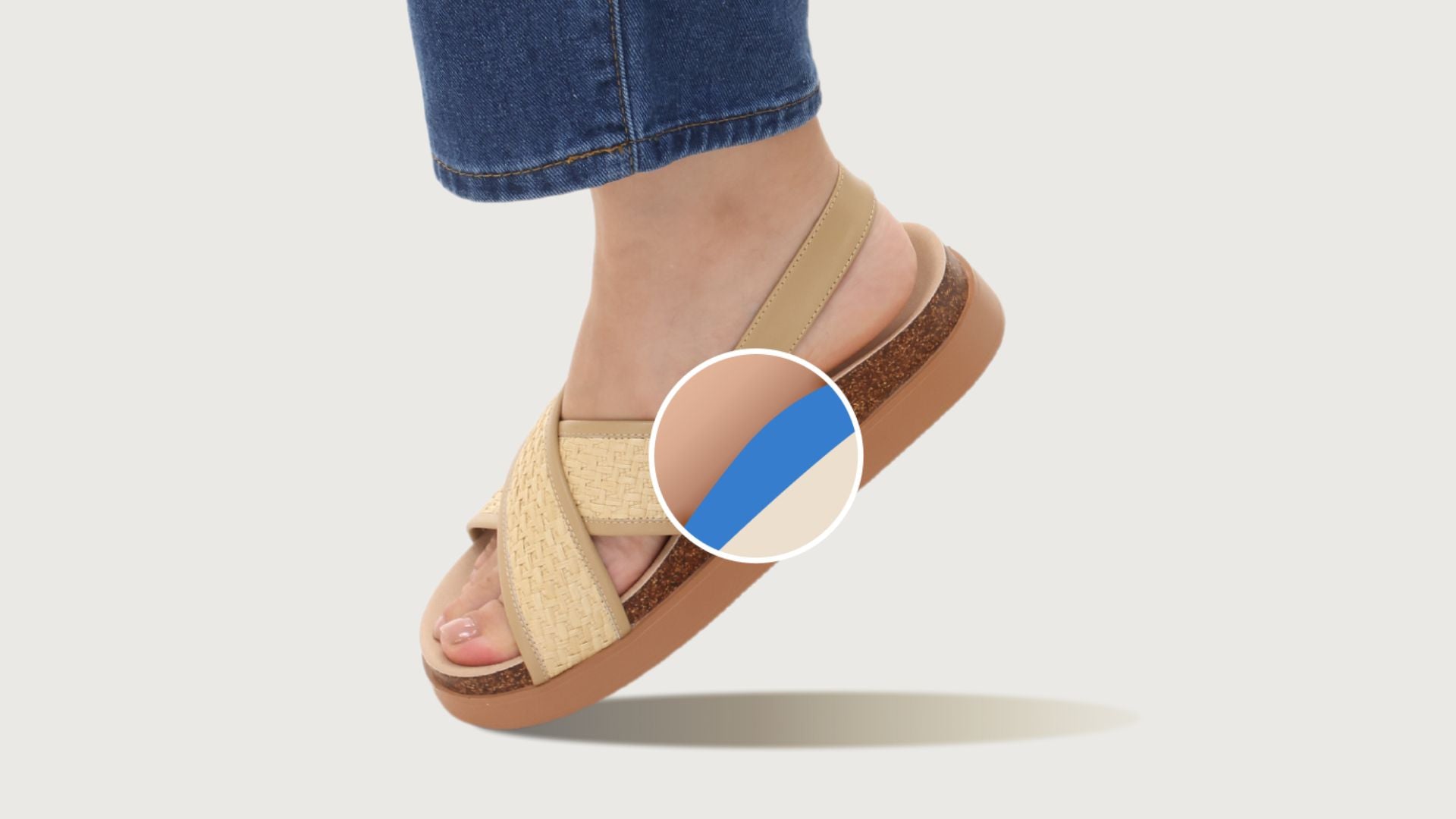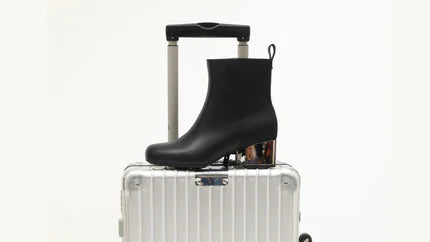Plantar fasciitis got you down? You're not alone! This common foot problem can be a real pain, literally. But fear not, we're here to help you understand what's causing your discomfort and how to kick it to the curb. In this article, we'll explore the ins and outs of plantar fasciitis, from the culprits behind the pain to the best ways to find relief.
What Causes Plantar Fasciitis?
1. Physical Activity Can Cause Problems
Physical activities can sometimes cause plantar fasciitis. Running or doing long-distance activities on uneven ground can put a lot of stress on your feet. Activities that involve jumping or dancing also contribute to this issue. Suddenly increasing how much exercise you do can strain your feet, especially if you don't give them enough rest in between workouts.
2. Foot Issues That Lead to Pain
Certain foot problems can trigger plantar fasciitis. If your foot can't bend upward very well, it may lead to pain. People with flat feet or high arches are more likely to have this problem because of how their weight is distributed when they walk. Tight or weak calf muscles and walking with your feet rolling inward can also play a part. Additionally, tight Achilles tendons can limit how your feet move, adding to the discomfort.
3. Jobs and Habits That Make It Worse
Your job and daily habits can also cause plantar fasciitis. Standing for long periods, especially on hard floors, puts pressure on your feet. This is common in jobs like teaching, nursing, or retail work. Wearing shoes without good arch support or using stiff-soled shoes can make things worse, as can frequently wearing high heels. Sudden weight gain, such as during pregnancy, also adds extra stress to your feet.
4. Getting Older Might Affect Your Feet
Age can be another factor in developing plantar fasciitis, with people aged 40 to 60 being more at risk. As we get older, the tissue in our feet becomes less flexible, making it easier for problems like plantar fasciitis to occur.
5. Everyday Surfaces You Walk On
The surfaces you walk on can affect your feet too. Walking on hard surfaces all the time can strain your feet, especially if you switch to different surfaces suddenly. Wearing old or worn-out shoes doesn't help because they lack proper support.

What Are the Symptoms of Plantar Fasciitis?
Plantar fasciitis can cause a range of symptoms that affect your feet, especially the heels. Here are the common symptoms of plantar fasciitis:
- You may feel a sharp or stabbing pain under your heel.
- Sometimes, there is also pain in the arch of your foot.
- The pain is often at its worst during the first steps you take in the morning.
- Pain can worsen after sitting for long periods or being inactive.
- The pain often gets worse after physical activities, not during them.
- Climbing stairs can be very painful.
- You might feel an aching or burning sensation along the bottom of your foot.
- The area might be tender to the touch.
- Your foot might feel stiff, especially when you wake up.
- There could be some swelling around the heel.
- Your foot might feel stiff, especially when you wake up.
- A tight Achilles tendon can also contribute to the discomfort.
- Heel pain can also be dull or aching.
These symptoms can develop gradually over time or suddenly after intense activity and are typically worse in the morning or after resting.
Why Your Footwear Matters for Plantar Fasciitis
When you have plantar fasciitis, walking can hurt and remind you how important it is to wear the right shoes. The plantar fascia is a thick band of tissue along the bottom of your foot that connects your heel to your toes. That's why picking the right shoes is so important when you're dealing with plantar fasciitis.
- Shoes with Good Arch Support Reduce Foot Stress: Good shoes offer crucial support to your foot's arch, which helps distribute your weight more evenly and reduces stress on the plantar fascia when you walk or stand.
- Cushioned Shoes Soften Walking Impact: Proper cushioning in the heel and forefoot absorbs shock as you walk. This cushioning softens each step's impact, providing relief from pain.
- Properly Fitting Shoes Alleviate Foot Pain: Properly fitting shoes won't squeeze or press on painful areas of your foot. This reduces irritation while walking and allows inflammation to heal.
- Stable Shoes Prevent Excessive Foot Movement: Stable shoes limit excessive foot movement. Overpronation, where the foot rolls too far inward, can strain the plantar fascia. Shoes that offer good stability help maintain proper foot mechanics.
- Moderate Heels Help Relieve Fascia Tension: A slightly raised heel lessens tension on the plantar fascia. However, heels that are too high can cause other problems, so a moderate, supportive heel is recommended.
While proper footwear may not completely cure plantar fasciitis, it can greatly reduce symptoms and help prevent further injury.
How to Choose the Right Shoes for Plantar Fasciitis
Choosing the right shoes can make a big difference in managing the pain of plantar fasciitis. Here’s what to keep in mind when shopping for shoes if you have this condition:
1. Get Shoes with Good Arch Support
Look for shoes with strong arch support. This helps reduce pressure on painful areas and spreads your weight more evenly across your feet.
2. Make Sure There's Enough Heel Cushioning
Make sure there is plenty of cushioning under the heel. A cushioned heel lessens the impact on your plantar fascia with every step.
3. Fit Your Shoes Properly
It’s crucial that your shoes fit well. Shoes that are too tight can worsen your foot pain, while shoes that are too loose won’t offer enough support. Your toes should have some wiggle room, but your feet shouldn't slide around.
4. Choose Shoes That Mold to Your Feet
Choose shoes with a contoured footbed that adapts to the shape of your foot for extra comfort and support.
5. Look for a Firm Back of the Shoe
The heel counter, which cradles the back of your heel, should be firm to provide stability and prevent overpronation or excess movement that could strain your plantar fascia.
6. Pick Shoes with a Sturdy Sole
A shoe sole that isn’t overly flexible will help avoid too much bending of the foot, reducing stress on the plantar fascia. However, some flexibility at the forefoot is necessary for natural walking.
7. Go for Low or Medium Heels
Avoid flat shoes and high heels. Opt for shoes with a low to moderate heel to relieve pressure on the plantar fascia without creating other problems.
8. Choose Shoes That Let Your Feet Breathe
Shoes made from breathable materials will keep your feet dry and help prevent blisters, which is important when dealing with foot pain.
9. Check if Shoes Can Hold Orthotics
If you use orthotics, make sure your shoes can accommodate them. Some shoes come with removable insoles to make room for custom inserts.
When looking for shoes to relieve plantar fasciitis, they should feel comfortable right away—no breaking-in needed. Explore Wydr Studios’ collection of high-quality genuine leather shoes to find the perfect pair that offers the support your feet deserve.

How to Ease Plantar Fasciitis Discomfort
Plantar fasciitis can be really painful, but there are some easy ways to relieve the discomfort and stay active. Here are some simple methods to help you feel better and keep moving:
- Rest and Ice to Reduce Foot Pain: Give your foot a break by avoiding high-impact activities. Apply ice to the affected area for 15-20 minutes, 3-4 times a day. For targeted relief, try rolling a frozen water bottle under your foot.
- Use Pain Relievers Wisely: Use over-the-counter pain relievers like ibuprofen for short-term relief. Make sure not to use these for more than 10 days straight without checking with a doctor.
- Stretch Your Feet Regularly: Do specific stretches for your plantar fascia by pulling your toes back toward your shin. Hold each stretch for 30 seconds and repeat three times. It's best to stretch before your first steps in the morning and after sitting for a long time.
- Choose Supportive Footwear: Wear shoes that offer good arch support and cushioning. Consider using custom orthotics or insoles. Avoid shoes that are worn out and don't walk barefoot.
- Wear Night Splints for Overnight Relief: Sleep with night splints to keep your plantar fascia stretched overnight. These can help improve symptoms in about 4-12 weeks if used consistently.
- Get Professional Treatment if Needed: Consider physical therapy for expert-guided exercises. In severe cases, corticosteroid injections might help. For chronic issues, treatments like shock wave therapy may be recommended.
- Adopt a Healthy Lifestyle for Long-Term Relief: Maintain a healthy weight to reduce stress on your feet. Opt for low-impact activities like swimming or cycling. Gradually return to regular activities once you've been symptom-free for 4-6 weeks.
Find Relief from Plantar Fasciitis with the Right Shoes
Don’t let plantar fasciitis keep you from enjoying life. With the right shoes and a few simple changes, you can start to feel better. It might take some trial and error to see what works best for you, but don’t give up. Your feet do a lot for you, so taking care of them is important. If you’re still having trouble, it’s okay to reach out to a foot doctor for guidance. Keep trying, and you’ll likely find relief. Before long, you'll be walking, running, or just standing comfortably again.

FAQs
Q1: How long will it take to feel better when wearing the right shoes for plantar fasciitis?
Most people start to notice some pain relief within a couple of weeks after switching to supportive shoes. However, the time needed for significant improvement varies for everyone and might take several months if you wear them consistently. It's crucial to combine good footwear with other treatments your doctor recommends.
Q2: Can I wear high heels if I have plantar fasciitis?
No. Wearing high heels can make plantar fasciitis worse because they don't support your arch or heel well. If you must wear heels, opt for lower ones (around 2 inches) and limit the time you spend in them. Heels with a wider base offer more stability, and adding cushioned insoles can provide a bit of extra comfort.
Q3: Is walking barefoot at home okay if I have plantar fasciitis?
Generally, it's better not to walk barefoot if you have plantar fasciitis since it doesn't provide enough support and could delay healing. Instead, try wearing supportive indoor footwear, like comfort-focused slippers or sandals, to protect your feet and potentially speed up recovery.
Q4: What is the root cause of plantar fasciitis?
Plantar fasciitis happens when too much stress is put on the plantar fascia, the tissue connecting your heel to your toes. This can be due to overuse, bad shoes, being overweight, or having foot issues like high arches or flat feet.
Q5: Can I run with plantar fasciitis?
Running with plantar fasciitis is possible, but be careful. Reduce your running intensity, wear supportive shoes, and stretch well before you start. If running causes more pain, rest and consult a healthcare professional for guidance.



